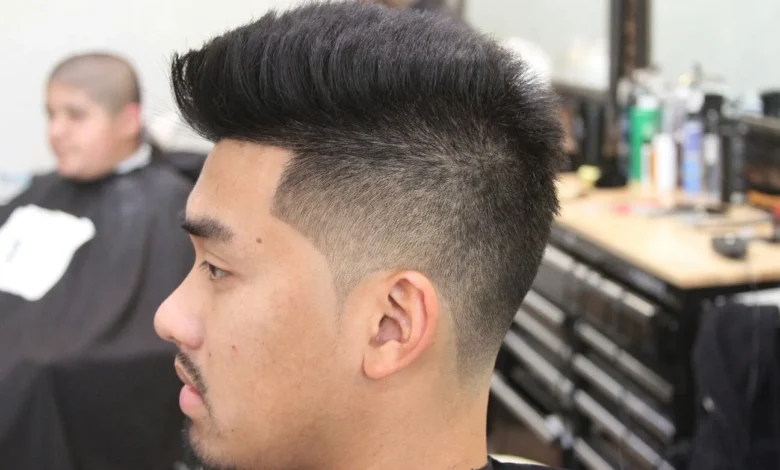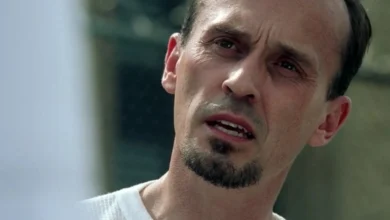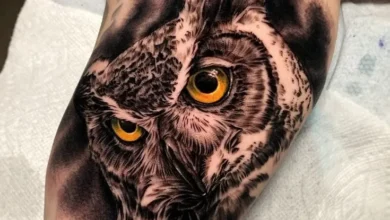Low Fade Haircut: A Timeless and Versatile Style

When it comes to timeless and versatile hairstyles, the low fade haircut consistently stands out. Known for its clean and polished appearance, this style has gained immense popularity among men across all age groups and cultural backgrounds. Whether you’re aiming for a sleek professional look or a laid-back casual vibe, the low fade offers endless customization options to suit your preferences.
This comprehensive guide explores everything about the low fade haircut, from its origins to styling techniques, making it the ultimate resource for anyone considering this stylish cut.
I. Introduction
A. Definition of a Low Fade Haircut
A low fade haircut is a modern hairstyle where the hair gradually tapers down from the sides and back, starting just above the ears. The fade creates a seamless transition between the longer hair on top and the shorter sides, giving it a clean and refined look. Its “low” designation comes from the point where the tapering begins, close to the hairline.
B. Brief History and Popularity
The fade haircut has roots in military grooming standards, where precision and neatness were essential. Over time, barbers refined the technique, giving rise to variations like the low fade, which became popular in urban and hip-hop cultures during the 1980s and 1990s. Today, it’s a staple in men’s grooming, favored for its versatility and universal appeal.
C. Purpose of This Guide
This article aims to provide a detailed understanding of the low fade haircut, including its defining features, styling options, and maintenance tips. Whether you’re exploring the style for the first time or looking to refine your current look, this guide will help you make informed choices.
II. The Basics of a Low Fade Haircut
A. Explanation of the “Fade” Concept
In hairstyling, a fade refers to a gradual transition in hair length, achieved by blending the hair seamlessly from shorter to longer lengths. The technique involves using clippers, scissors, and blending tools to create a smooth gradient.
B. Distinguishing Features of a Low Fade
The low fade stands out for starting the fade just above the ears and along the nape. This subtle placement creates a softer and more understated look compared to other fade types.
C. Comparison to Other Fade Types
- High Fade: Begins much higher on the head, creating a dramatic and bold contrast.
- Mid Fade: Falls between the high and low fade, offering a balanced yet striking appearance.
- Low Fade: Prioritizes subtlety, making it suitable for both professional and casual settings.
III. Characteristics of a Low Fade Haircut
A. Hair Length Gradation
The low fade involves a smooth transition from short, tapered sides to longer hair on top. The gradual fade ensures the style looks natural and well-blended.
B. Starting Point of the Fade
The fade begins just above the ear and extends around the back of the head, keeping the top section untouched or minimally trimmed for styling.
C. Blending Techniques Used
Barbers employ a combination of clippers with adjustable guards, scissors for precision, and razors for sharp detailing to achieve a flawless fade. The process ensures a clean and cohesive look without visible lines.
IV. Suitable Face Shapes and Hair Types
A. Ideal Face Shapes for Low Fades
The low fade haircut is versatile enough to complement various face shapes:
- Oval Faces: Works seamlessly, emphasizing natural symmetry.
- Square Faces: Accentuates jawlines with its clean edges.
- Round Faces: Adds structure by creating the illusion of length.
B. Hair Textures That Work Well
The low fade adapts to most hair types, including:
- Straight Hair: Offers a sleek and polished appearance.
- Curly or Wavy Hair: Adds definition and manages volume.
- Thick Hair: Provides structure without bulk.
C. Adaptability to Different Hair Lengths
From short buzz cuts to medium-length pompadours, the low fade complements various hairstyles, making it suitable for everyone.
V. Styling Options with a Low Fade
A. Popular Hairstyles Incorporating Low Fades
- Buzz Cut with Low Fade: Minimalist and sharp.
- Pompadour with Low Fade: Combines vintage flair with modern sophistication.
- Textured Crop: Adds movement and personality to the top.
- Quiff with Low Fade: Perfect for a bold and voluminous look.
B. Versatility in Formal and Casual Settings
The low fade haircut transitions effortlessly between settings. Pair it with a tailored suit for a professional look or tousled layers for a casual vibe.
C. Customization Possibilities
You can personalize the low fade with:
- Hard Parts: Sharp, defined lines for added detail.
- Designs: Geometric or artistic patterns shaved into the fade.
- Beard Integration: Seamless blending between the fade and a beard.
VI. Maintenance and Upkeep
A. Frequency of Touch-Ups
To keep the fade looking fresh, visit your barber every 2–4 weeks, depending on hair growth.
B. At-Home Maintenance Tips
- Use a trimmer to tidy up stray hairs along the edges.
- Apply a lightweight pomade or styling gel to maintain shape and texture.
C. Professional Care Recommendations
Regular appointments with a skilled barber ensure precision and proper blending techniques.
VII. Tools and Techniques for Achieving a Low Fade
A. Clippers and Guards Used
Barbers rely on clippers with adjustable guards to create the fade. Common guard sizes include:
- #0 or #1 for ultra-short sections.
- #2 to #4 for longer gradients.
B. Scissors and Razors for Detailing
For precision, barbers use scissors to blend the fade further and razors to define edges and clean up hairlines.
C. Blending and Tapering Methods
Blending involves smoothing the transition lines between different lengths, while tapering ensures the fade gradually diminishes towards the skin.
VIII. Cultural Significance and Trends
A. Origins in Different Cultures
The fade haircut has roots in military grooming, evolving through the influence of hip-hop culture and urban communities.
B. Evolution of the Low Fade in Popular Culture
Celebrities and athletes popularized the low fade, incorporating it into modern fashion and making it a red-carpet staple.
C. Current Trends and Variations
Today’s trends include:
- Skin Fades: Ultra-short fades for a bold statement.
- Curly Low Fades: Emphasize natural textures.
- Tapered Low Fades: Offer a softer, classic look.
IX. Pros and Cons of a Low Fade Haircut
A. Advantages
- Versatility: Works with almost any hairstyle.
- Modern Appeal: Always in style, suitable for all occasions.
- Clean Look: Enhances sharpness and structure.
B. Disadvantages
- Frequent Maintenance: Requires regular touch-ups.
- Awkward Growth Stages: May look uneven as it grows out.
C. Considerations Before Getting a Low Fade
Ensure your lifestyle and grooming habits align with the upkeep requirements of the low fade haircut.
X. Conclusion
A. Recap of Key Points About Low Fade Haircuts
The low fade haircut is a timeless and versatile style, offering a clean, polished look that adapts to any occasion. Its subtle fade, customizable options, and ability to complement various face shapes and hair types make it a go-to choice for modern men.
B. Final Thoughts on Suitability and Style
Whether you prefer a classic look or a bold, trendy vibe, the low fade can be tailored to suit your personality and preferences.
C. Encouragement to Explore Personal Style with Low Fades
The low fade haircut allows for creative expression while maintaining a polished appearance. Consult a skilled barber to achieve the perfect look for you.
FAQs
1. What is a low fade haircut?
A low fade haircut features a gradual taper starting just above the ears, creating a clean transition between longer hair on top and shorter sides.
2. How does a low fade differ from a high fade?
The low fade begins closer to the neckline, while the high fade starts higher up on the head for a more dramatic contrast.
3. Who can wear a low fade?
The low fade haircut suits most face shapes and hair types, making it a versatile choice for nearly anyone.
4. How often should I get a low fade touch-up?
Touch-ups are recommended every 2–4 weeks to maintain a sharp look.
5. Can I style a low fade for formal occasions?
Yes, the low fade is highly adaptable and can be paired with professional or formal hairstyles like pompadours or slicked-back looks.
6. What tools are used for a low fade?
Barbers use clippers with adjustable guards, scissors, and razors to achieve a clean and precise fade.
Poster Creative and Make Your Virus: A Guide to Crafting Viral Posters
CryptoweeksBloomberg: Your Trusted Source for Cryptocurrency Insights



